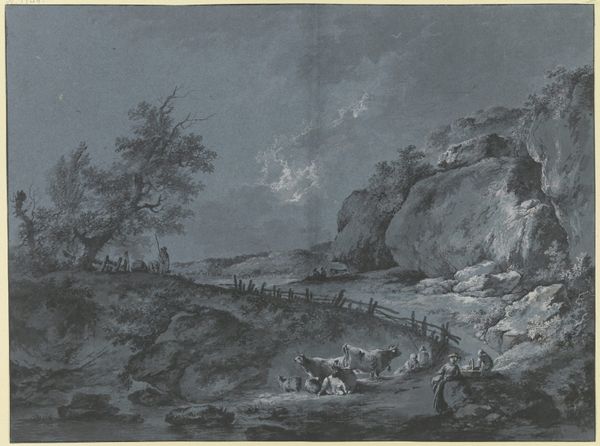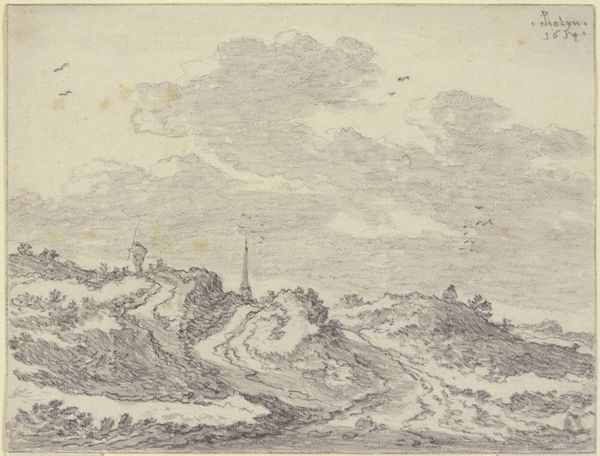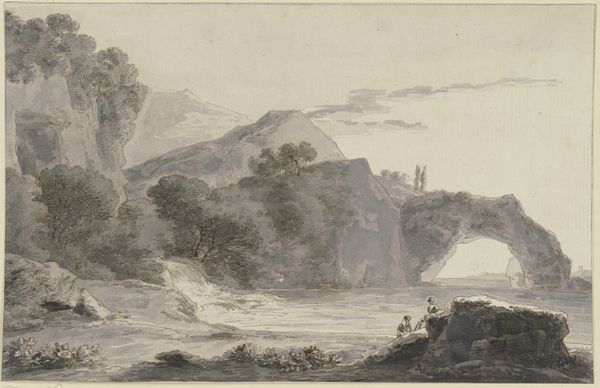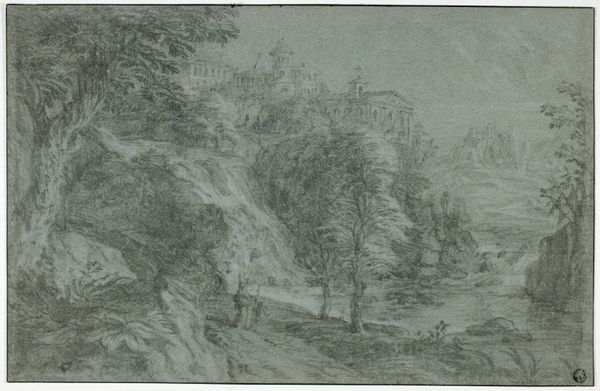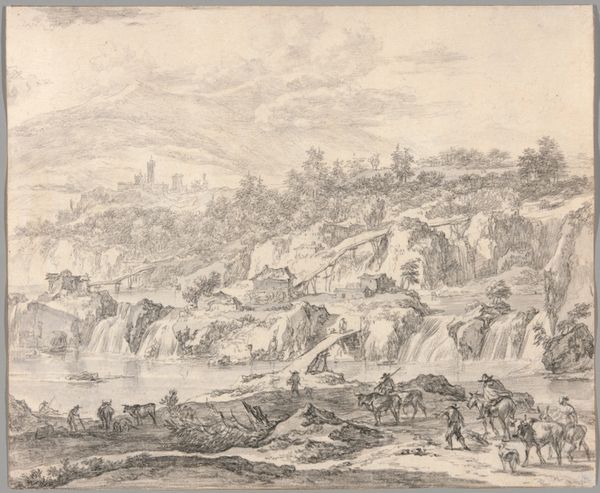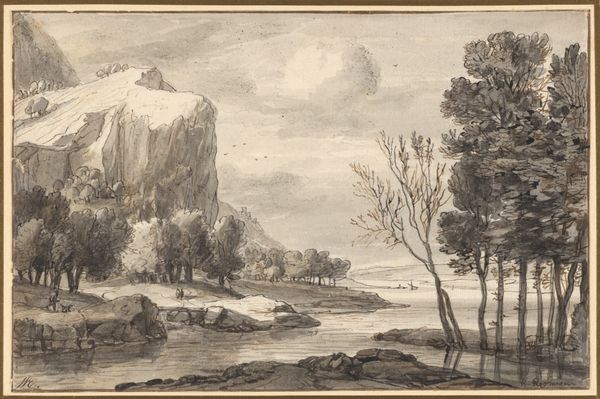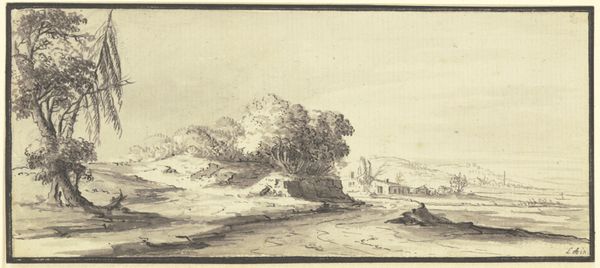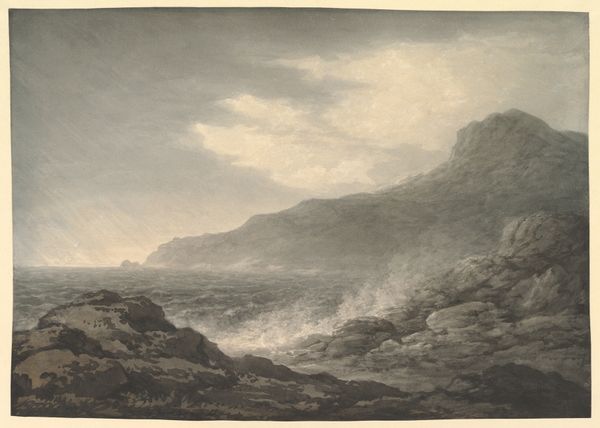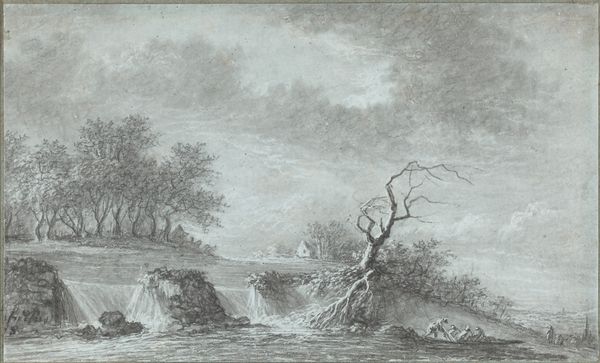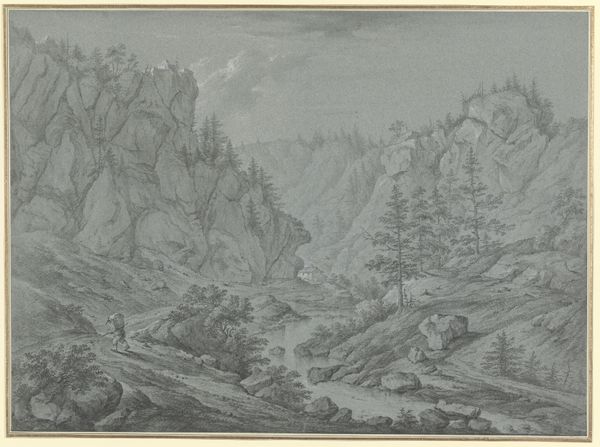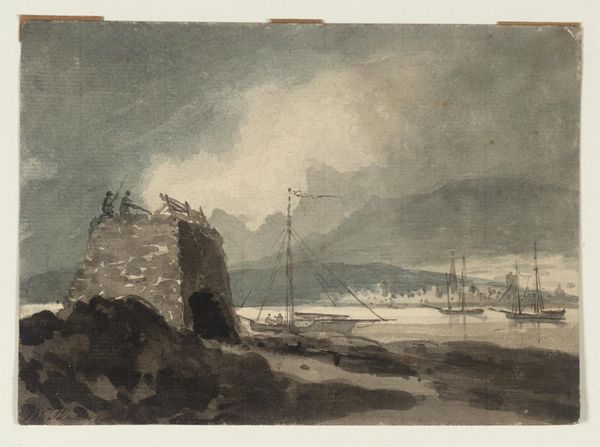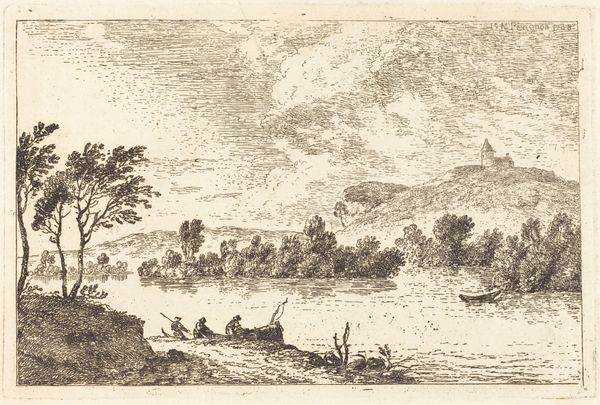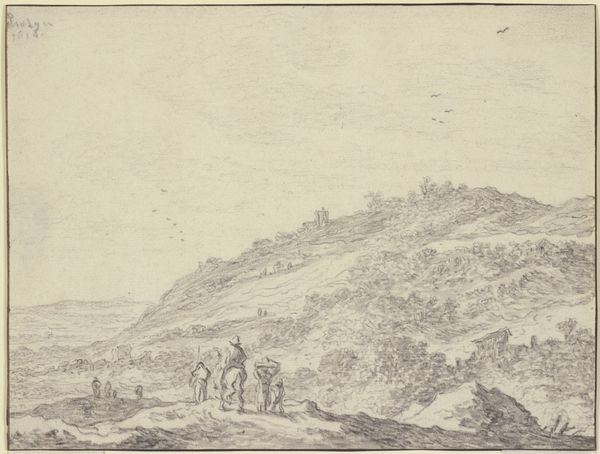
drawing, red-chalk, print, pencil, chalk, engraving
#
drawing
#
ink painting
#
red-chalk
# print
#
landscape
#
pencil
#
chalk
#
15_18th-century
#
engraving
Copyright: Public Domain
Editor: So, this is *Der Rheinfall bei Schaffhausen*, circa 1780, by Franz Schütz. It's an engraving in red chalk and pencil, showing the Rhine Falls. It strikes me as quite a moody, almost romantic depiction of nature. What do you see in this piece? Curator: I'm drawn to the materials and the production process here. Notice the red chalk, the pencil, the engraving. This isn’t just a depiction of the falls; it’s a record of labour. The artist, and perhaps assistants, carefully translated the scene through specific material choices. Editor: That's interesting. I hadn’t thought about it that way. The red chalk gives it such a soft, almost dreamlike quality. Was there a particular reason for choosing these specific materials? Curator: Exactly! Think about what those materials *meant* in the late 18th century. Chalk and pencil, relatively accessible and easily transported, were essential for preliminary studies and landscape sketching *en plein air*, fitting the culture of scientific investigation and picturesque tourism. How readily were prints like this consumed and distributed? That's also part of the story. Editor: So, you’re saying that the print wasn’t just art; it was also a commodity in a way? Like, part of a system? Curator: Precisely! Consider who was buying these prints. Were they purchased by landowners, wealthy tourists on their "Grand Tour," or artisans seeking to reproduce them? Also, think about what skills the artist brought to this process. Editor: That reframes everything! I was focused on the aesthetic, but seeing it as a product of material conditions and labor... It makes it much more complex. Curator: It is an engagement, through materials and means, of nature. Focusing on the human imprint. Now, when you look again, what is different for you? Editor: I see now a negotiation between artistic expression and commercial imperatives of that era. It connects art, materials, culture, labor, and economics – all things to consider more deeply. Curator: Exactly. These elements often transcend boundaries, redefining them as dynamic rather than absolute distinctions.
Comments
No comments
Be the first to comment and join the conversation on the ultimate creative platform.
